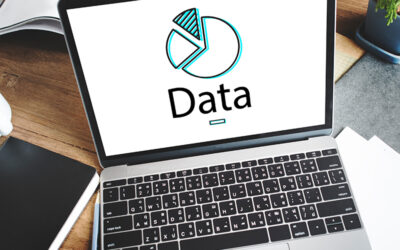Data is changing the world. Proper data management is crucial when it comes to harnessing the full potential of an organization’s data assets and maintaining a competitive position in its market. For many businesses, partnering with a trusted business process outsourcing company can be an effective way to achieve efficient data management. Data cleansing and data transformation are vital steps in data management that directly impact an organization’s ability to make informed decisions, maintain compliance, improve operational efficiency, and gain a competitive advantage.
According to Gartner, enhanced data management practices can result in substantial annual savings of $12.9 million for the average organization. These financial benefits materialize through various means, including the facilitation of automated processes, the reduction of time spent by employees searching for essential data, and the enhancement of precision in business decision-making. Data cleansing and data transformation play a vital role in ensuring that data is not only accurate but also user-friendly, but also making it easier for organizations to extract valuable insights and make informed decisions. Let’s look at the differences between data cleansing and data transformation.
Data Cleansing and Data Transformation – Two Distinct Processes
Data Cleansing
Also known as data scrubbing or data cleaning, data cleansing is the process of identifying and correcting errors, inconsistencies, and inaccuracies in datasets. The primary goal is to ensure that data is accurate, reliable, and consistent. It involves removing inconsistent, incomplete, duplicated, and redundant information.
The process of data cleaning includes:
- Standardizing data
- Identifying and fixing errors
- Removing incorrect data
- Correcting format
- Checking the accuracy of information
- Compiling all data information in a single area
Data cleansing services in a dataset with improved quality, reduced errors, and increased accuracy, making it more user-friendly and reliable for decision-making. The steps involved in the process of data cleansing are:
- Removing irrelevant observations
- Fixing errors in structure
- Filtering irrelevant or unwanted outliers
- Handling missing information
- Identifying the purpose of the data
Popular tools used to perform data cleansing include: Trifacta Wrangler, Tibco Clarity, Data Ladder, Cloundingo, Xplenty, Melissa Clean Suite, Winpure Clean And Match, and Ringlead.
These tools simplify the data cleansing process and help you get the most out of your data.
Data Transformation
Data transformation is the process of converting data from one format or structure to another. It involves modifying data to ensure compatibility, consistency, and usability. It makes data structured and accessible and contributes its user-friendliness. The process of data transformation involves:
- Data integration – aligning data in different formats, making it easier to integrate data from multiple sources into a unified dataset.
- Normalization – normalizing data by scaling it to a common range, making it easier to compare and analyze.
- Aggregation – aggregating granular data into higher-level summaries, simplifying complex datasets and facilitating higher-level analysis.
- Categorization – putting data into meaningful groups, simplifying data analysis and making it more user-friendly for end-users.
- Conversion – converting text data into numerical values for analysis or vice versa.
The process of data transformation involves various processes: extraction and analysis; translating and mapping; filtering, aggregation and summarizing; indexing; ordering; encrypting; modeling; typecasting; formatting, and renaming.
Data Cleaning versus Data Transformation
| Aspect | Data Cleaning | Data Transformation |
|---|---|---|
| Definition | The process of identifying and correcting errors, inconsistencies, and inaccuracies in a dataset. | The process of converting data from one format or structure to another, often to align with specific requirements. |
| Objective | To ensure data accuracy, reliability, and consistency. | To modify data to make it compatible, consistent, and usable for analysis or specific applications. |
| Errors addressed | Focuses on identifying and correcting errors, such as duplicates, misspellings, missing values, and data format issues. | Focuses on changing data from one form to another, which may involve aggregation, normalization, or categorization. |
| Data quality | Improves data quality by removing errors and inconsistencies, resulting in accurate and reliable data. | Enhances data quality by aligning data with specific requirements, making it suitable for analysis and decision-making. |
| Handling Missing Data | Addresses missing or incomplete data by filling in missing values or flagging records for further review. | May not directly handle missing data but focuses on data format, structure, and content changes. |
| Duplicates Removal | Identifies and removes duplicate records, ensuring that each record is unique. | Does not primarily deal with duplicate removal but may result in consolidated or aggregated data |
| Normalization | Does not directly involve normalization. It focuses on data accuracy and consistency. | Involves data normalization to scale data to a common range for easier comparison and analysis |
| Data Integration | Does not inherently address data integration issues. | Aligns data formats and structures to facilitate integration, especially when dealing with data from multiple sources |
| Categorization | Aims to correct errors and improve data quality, and generally does not categorize data. It | May categorize data as part of the transformation process to simplify analysis and make data more user-friendly. |
Ensuring data accuracy within the data warehouse demands the combined efforts of data cleansing and data transformation processes. Given the intricate and potentially complex nature of these processes, most organizations opt for business process outsourcing services to harness the full potential of their data.
Our data cleansing services can transform your data into a valuable asset! Call (800) 670-2809 to speak with our solutions manager!




